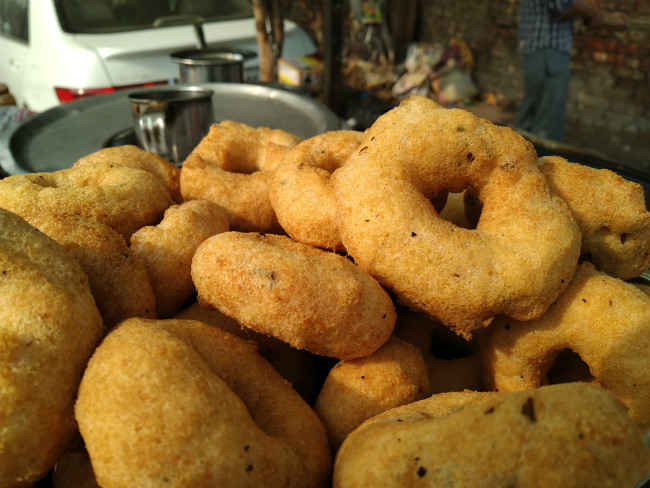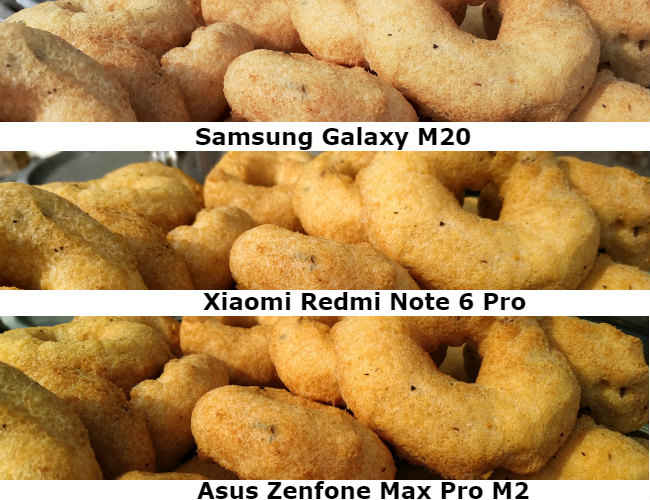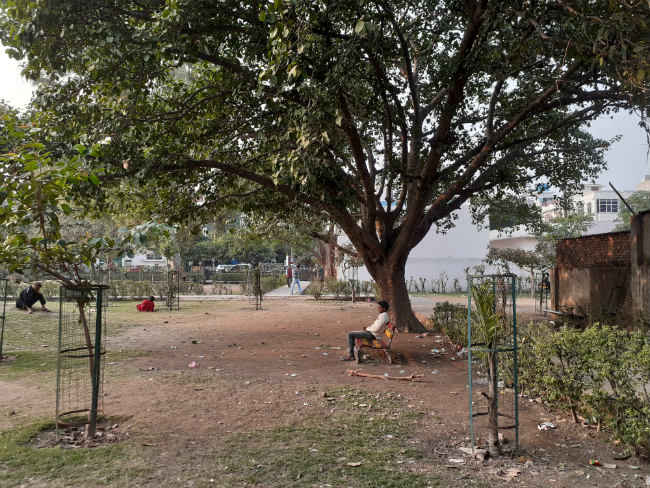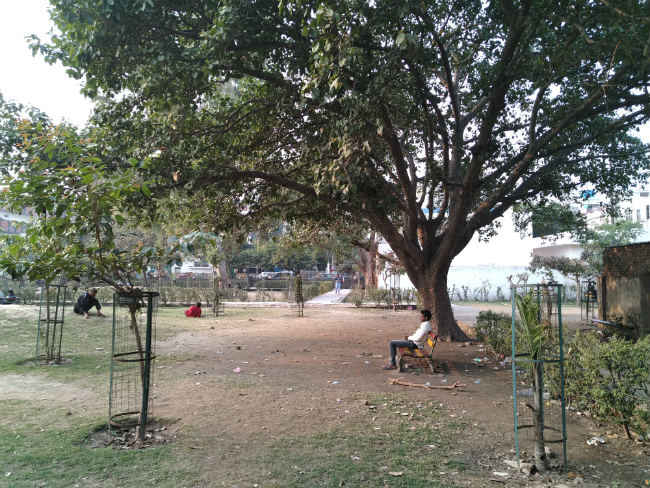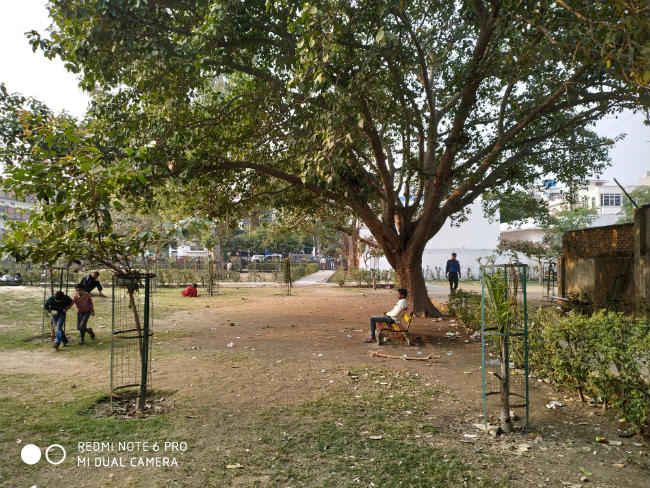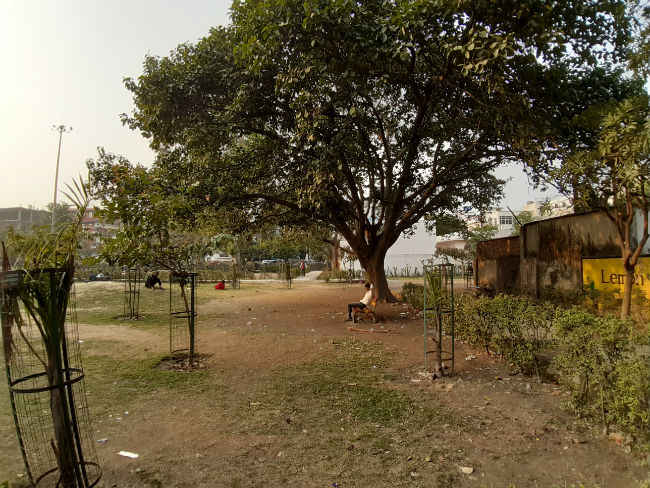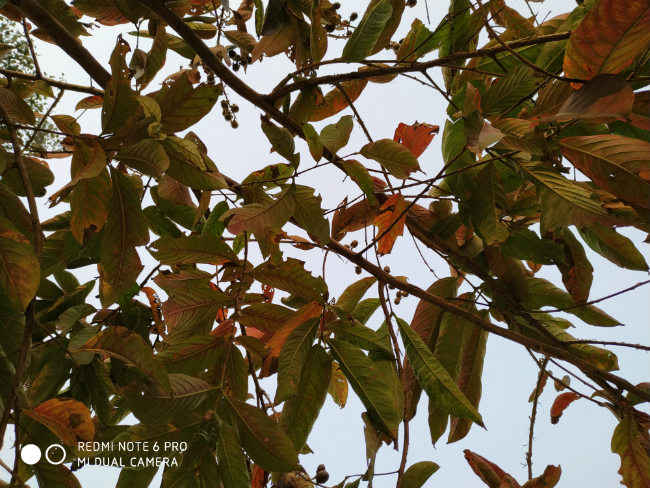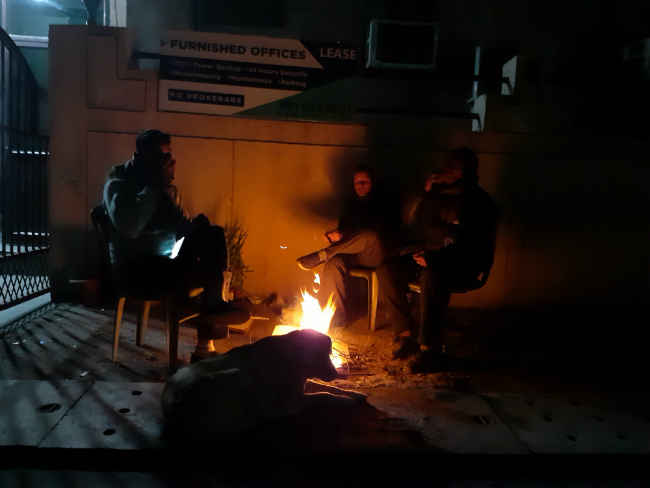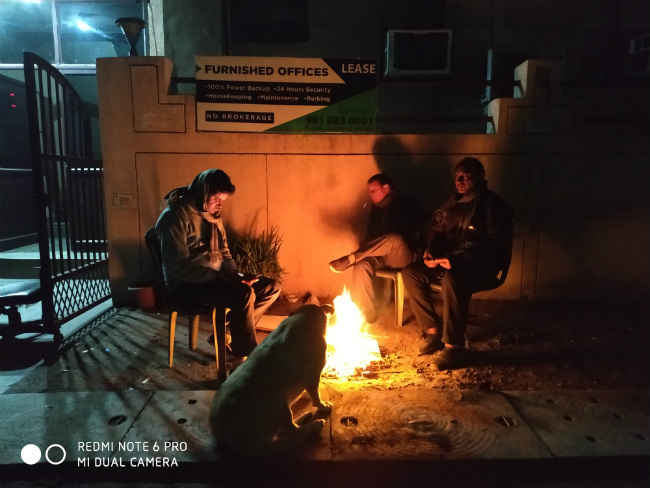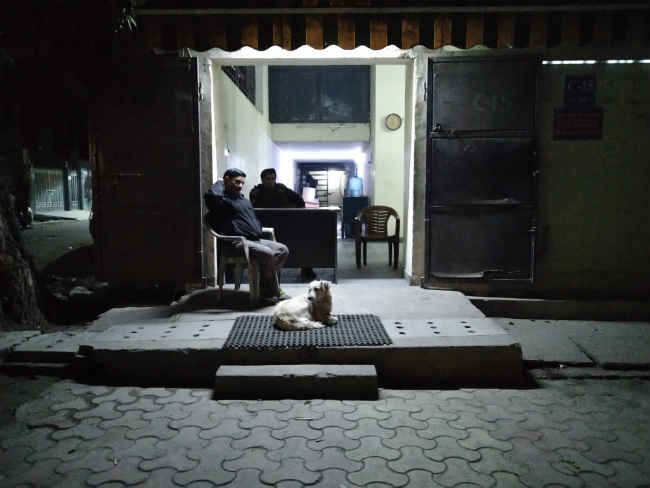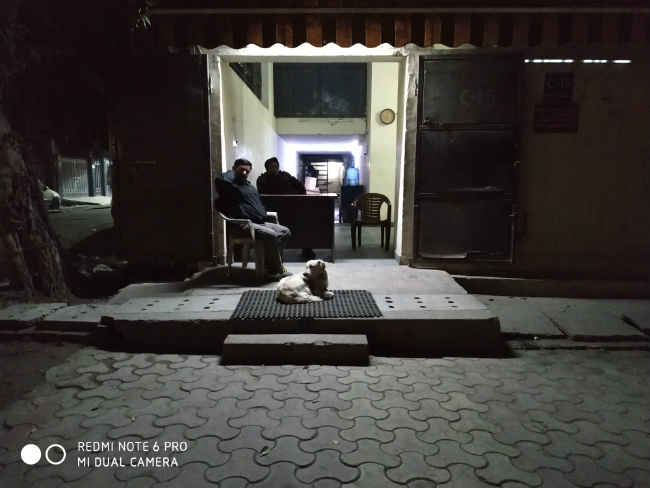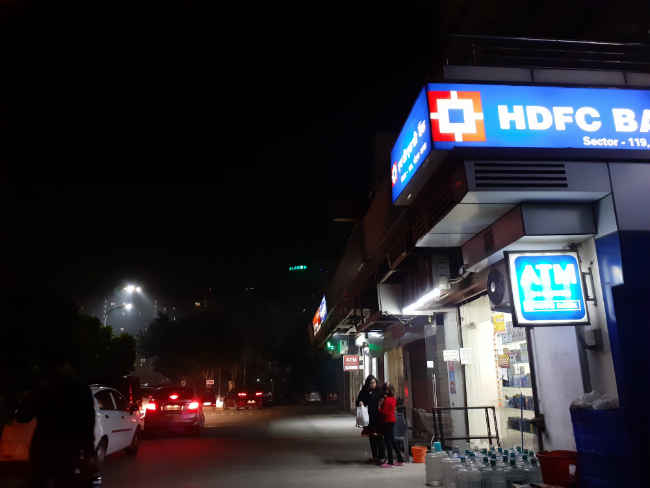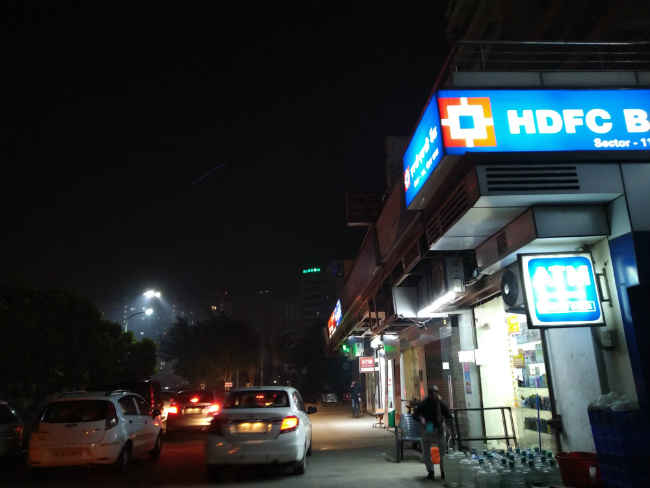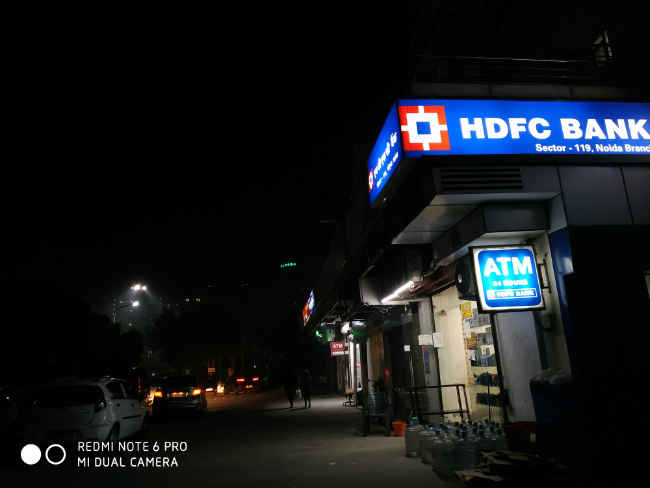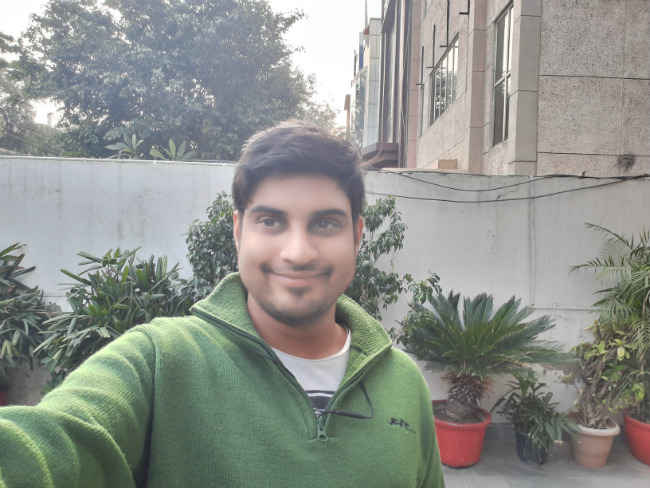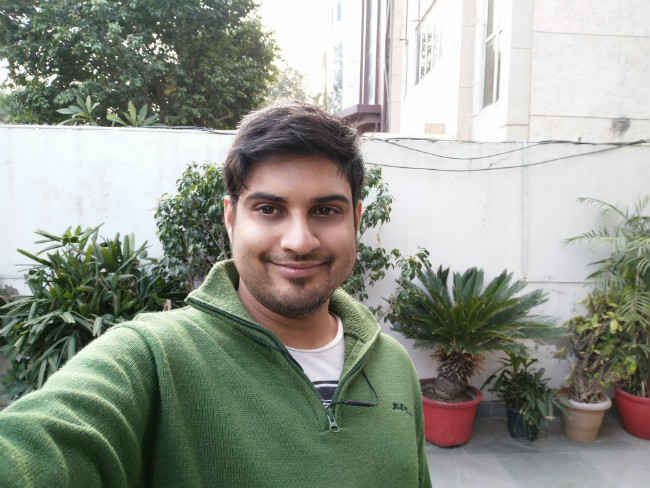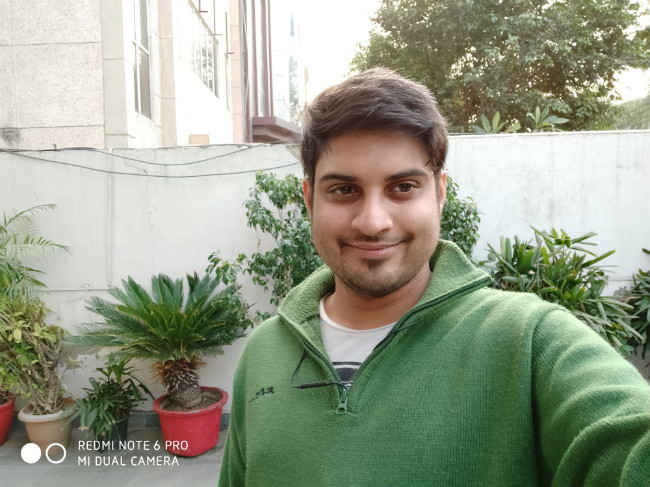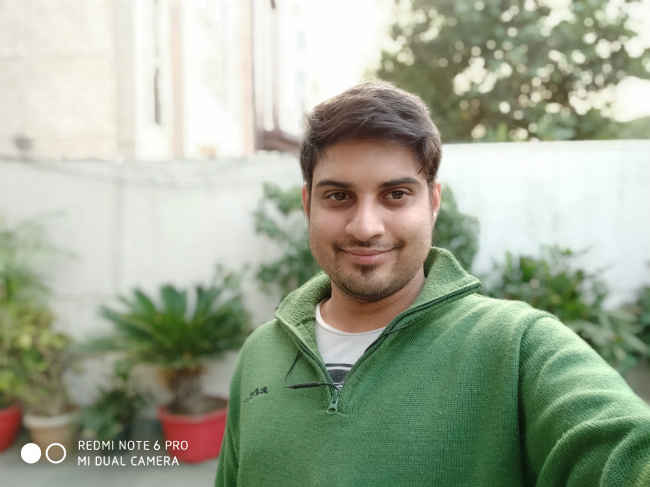Samsung Galaxy M20 vs Asus Zenfone Max Pro M2 vs Xiaomi Redmi Note 6 Pro camera shootout: Which is the best mid-range camera phone to buy?
While the entry of the wide-angle camera touting Galaxy M20 is certainly disruptive for the mid-range segment, what's the best camera phone to buy?
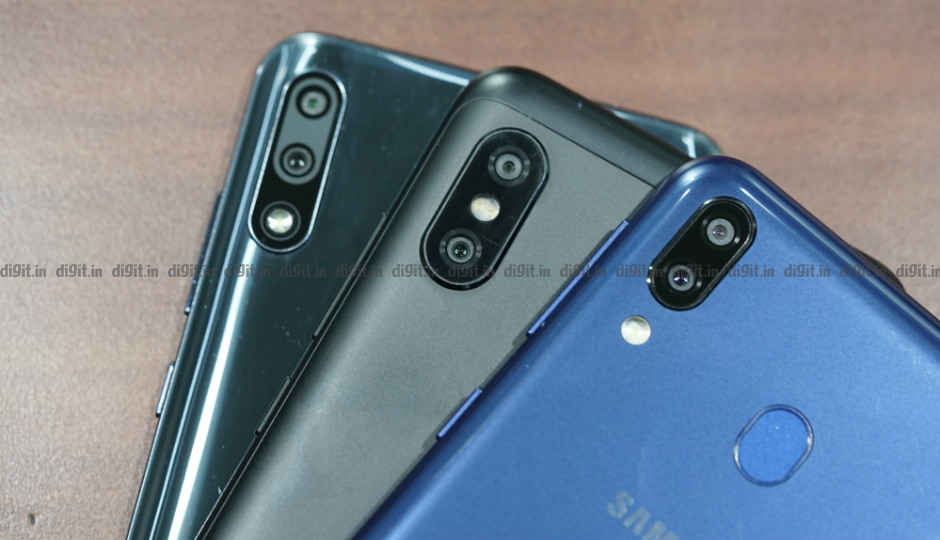
With the Samsung Galaxy M20, the mid-range segment got yet another boost in terms of imaging capabilities. Both the Galaxy M10 and the Galaxy M20 introduced ultra-wide-angle cameras to the mid-range segment. Before that, we already got a taste of how good mid-range smartphones cameras had become over time in the Xiaomi Redmi Note 6 Pro and the Asus Zenfone Max Pro M2. Both phones proved to be capable of taking some good photos both in the day and after the sun sets. With the competition now heating up with Samsung’s foray into the mix, we take a look at the best camera phone to buy under Rs 15,000.
 Survey
SurveyDisclaimer
Before we begin, do note that the photos you see in this articles have all been resized to be optimised for the web. To see the full-resolution photos from each of the phones, check out our Samsung Galaxy M20 vs Xiaomi Redmi Note 6 Pro vs Asus Zenfone Max Pro M2 Flickr Gallery.
Details
While most mid-range cameras these days ensure aesthetically pleasing photographs when viewed on the phone screen, it’s the lack of details in the photos that make them look bad on a big screen. Smaller sensors, aggressive JPEG compression and low-quality lenses are the usual culprits behind a poorly detailed shot. As a result, this is the first thing we look at when comparing cameras.
Samsung Galaxy M20
Asus Zenfone Max Pro M2
Xiaomi Redmi Note 6 Pro
We took closeup photos of freshly fried vadas outside our office using the three phones. The close-up shots are often good indicators of how much detail each camera system is capable of capturing. Clearly, all the three phones are quite capable of reproducing details in closeup shots. The Galaxy M20’s photo had washed out colours while the Asus Zenfone Max Pro M2 blew up the saturation. The one taken from the Redmi Note 6 Pro got closest to reproducing the original colours and even got the grainy texture of the snack right.
Samsung Galaxy M20: 7/10
Xiaomi Redmi Note 6 Pro: 8/10
Asus Zenfone Max Pro M2: 7.5/10
Winner: Redmi Note 6 Pro
Landscape
With HDR algorithms now present in almost every phone, being able to take good landscape shots in the day is almost a given. Even then, some phones tend to do it better than others. The biggest fault we find among phones while taking landscape shots is the overprocessing done to them in the name of AI. Honor phones are especially famous for it, and even Xiaomi with the Redmi Note 6 Pro started doing it. The result is again an aesthetically pleasing photo when seen on the phone’s display, but not so much when seen on a bigger display.
Samsung Galaxy M20
Asus Zenfone Max Pro M2
XIaomi Redmi Note 6 Pro
In case of the three phones we tested, the results surprisingly differed a lot from each other. The Galaxy M20 gave an oversharpened image where the leaves look a little too crisp. The Redmi Note 6 Pro, on the other hand, recognised the scene I was shooting (it showed a leaf symbol on top) and gave the best-composed shot out of the three, even though the outcome seemed a bit too warm. The Zenfone Max Pro M2 sits somewhere in between. The colours in the photo taken by the Zenfone Max Pro M2 doesn’t appear as vibrant as the others. It appears a bit faded.
Samsung Galaxy M20 Ultra-wide angle mode
We also took the same photo using the Galaxy M20’s wide-angle camera. You can see the sample below. The wide-angle camera suffers from major barrel distortion where the shape of the tree cage is warped beyond recognition. Samsung does offer a feature to correct the shape, but doing that crops out the frame giving you a photo similar to what you’d take using the primary camera.
Samsung Galaxy M20: 7.5/10
Xiaomi Redmi Note 6 Pro: 8/10
Asus Zenfone Max Pro M2: 7/10
Winner: Xiaomi Redmi Note 6 Pro
HDR/Colours
All things considered, the quality of a photo is often judged by how well the colours look. Thanks to HDR algorithms, subjects that are backlit appear to retain more colour and details in the photo (subject to JPEG compression), and becomes the ultimate judge of a smartphone camera, considering the tricky situations many come across that look good to the naked eye, but not in the camera.
Samsung Galaxy M20
Asus Zenfone Max Pro M2
Xiaomi Redmi Note 6 Pro
In this case, the Samsung Galaxy M20 manages to get a lot of details in the frame. The leaves backlit by a bright sky would ideally appear dark but the HDR algorithms kick in to bring out the colours in the leaves. The Zenfone Max Pro M2, even with the HDR mode turned on, failed to capture as much detail as the Galaxy M20. The leaves are considerably darker and the colours can’t be easily made out. The Redmi Note 6 Pro also does a pretty good job with the photo, but in this case, the sky lacks details. While the M20 manages to preserve the blue colour of the sky, in this case, the sky is just white. Furthermore, the photo is a little less illuminated as compared to the Galaxy M20. As a result, in this case, the Galaxy M20 comes out as the winner.
Samsung Galaxy M20: 8/10
Asus Zenfone Max Pro M2: 6/10
Xiaomi Redmi Note 6 Pro: 7/10
Winner: Samsung Galaxy M20
Low light
While all the three phones more or less are capable of taking good photos when there’s ample light, it’s when the light is poor, that smartphone cameras have traditionally struggled. Most OEMs these days try to address the issue using various techniques. Some use larger pixels while some bin smaller pixels to create large super pixels. However, because the sensor itself is not so big, low-light photos can never match the likes of a DSLR or a point-and-shoot. Add to that, the lack of stabilisation of any sort in mid-range phones, the issue only gets compounded. As a result, we weren’t expecting the three phones under consideration to take exceptionally good photos in low-light. However, one can always pick out a winner relative to the others.
The Galaxy M20’s low-light photos are plain unusable. The phone firstly takes a lot of time to shoot the photo, which resulted in the blurred shot in the first two samples below. Furthermore, there’s absolutely no detail in the photos as Samsung is using its aggressive noise reduction algorithms to keep the image noise as low as possible. The third image though managed better than the other two. The backlight of the logo helped restore some detail to the shot, however, the subjects in the background appear like elements from a water-colour painting.
The Asus Zenfone Max Pro M2 also took more time than usual to shoot the photos. However, the result was a bit better than Samsung’s. This one too applied heavy noise reduction thereby reducing the details. The fire in the frame is just a yellow blob with no texture whatsoever. The phone managed the second photo much better. The light in the background helped restore some details, even though the noise-reduction is applied here as well. In the third shot, the blue in the logo appears a lot more faded as compared to the others. It’s not that faded in real life. The camera also blew the highlights in the logo because of the backlight.
The resulting shots from the first two phones would have been fine if not for the Redmi Note 6 Pro’s low-light photos. Poor low-light photos are what we usually expect, but Xiaomi managed to exceed expectations. The phone managed to bring out a good balance of lights and shadows, even though the flame itself is clipped. There’s some level of noise-reduction applied here as well, but not as aggressive so as to lose every detail. The second shot, however, is just as bad as the ones taken by the other two phones. The decisive factor becomes the third shot, where the Redmi Note 6 Pro produced the sharpest image out of the three. The colour of the logo is nearly perfect, but the surrounding areas are all in the shadows. All the three cameras were exposed for the logo on top, but Samsung managed to eke more details out of the frame by lighting up the background as well.
Samsung Galaxy M20
Asus Zenfone Max Pro M2
Xiaomi Redmi Note 6 Pro
Samsung Galaxy M20
Asus Zenfone Max Pro M2
Xiaomi Redmi Note 6 Pro
Samsung Galaxy M20
Asus Zenfone Max Pro M2
Xiaomi Redmi Note 6 Pro
It’s a difficult segment to judge, but after analysing all the shots, it’s the Redmi Note 6 Pro that provides best out of the three.
Samsung Galaxy M20: 6/10
Asus Zenfone Max Pro M2: 6.5/10
Redmi Note 6 Pro: 7/10
Winner: Xiaomi Redmi Note 6 Pro
Portrait Mode
The portrait mode is marketed as a must-have feature these days with most dual-camera phones offering the feature. Heck, some even rely on a single camera to do it. In case of the Asus Zenfone Max Pro M2 and the Redmi Note 6 Pro, the secondary cameras act as the depth sensor to separate the subject from the background. The Samsung Galaxy M20, however, relies on software to enable portrait mode. Both the Note 6 Pro and the Zenfone Max Pro M2 offer the ability to choose the amount of blur you want in your photo. Samsung doesn’t offer any of that. It also works only when there’s a face in the frame and you have to be a meter away from the subject. Also, the Zenfone Max Pro M2 took an awfully long time to process the portrait mode, and both the Note 6 Pro and the Max Pro M2 randomly deleted photos I took, especially portraits, leading to way too many reshoots (hence the fading smiles in their faces).
None of the phones can realistically replicate a bokeh shot though. In all the three cases, the portrait shots seem to be shoddily done Photoshop work. As a result, we could only choose a winner relative to the three.
Samsung Galaxy M20
Asus Zenfone Max Pro M2
Xiaomi Redmi Note 6 Pro
The Samsung Galaxy M20’s portrait photo came out looking too artificial. The phone automatically applied beauty effects making the subject’s skin appear fairer than usual. Even the colour of the clothes appear whitened and faded. The separation around the edges is quite evident with jagged sharp lines. The result isn’t all too good.
Coming to the Max Pro M2, the phone did a better than the Galaxy M20. The colours appear much more natural. The blurring too is more consistent around the edges. I liked the fact the camera accounted for the spectacles and didn’t blur it out.
The Redmi Note 6 Pro’s result is much more well-lit. The red tshirt, however, appears pinkish. The blurring too is more consistent than the Zenfone Max Pro M2, but the phone applied its beautifying effects that smoothened out facial details.
Considering how none of the three devices got the portrait mode right, it’s quite difficult to adjudge a winner. If I have to pick among the three, the Note 6 Pro once again seems a better choice.
Samsung Galaxy M20: 6/10
Asus Zenfone Max Pro M2: 7/10
Redmi Note 6 Pro: 7.5/10
Winner: Xiaomi Redmi Note 6 Pro
Selfies
Similar to the portrait photos, the selfie camera is also quite lucrative and is marketed as an important feature to have. In the case of the three phones in question, the quality of selfies differs vastly.
Samsung Galaxy M20
Samsung Galaxy M20 (Portrait Selfie)
Asus Zenfone Max Pro M2
Xiaomi Redmi Note 6 Pro
Xiaomi Redmi Note 6 Pro (Portrait Selfie)
The Samsung Galaxy M20 made me look like a ghost. My eyes look glassy (am I stoned?!) while my face looks like I put a KG of talcum powder. Clearly, it’s not the best way to present myself in a photo. Even in the live-focus mode, the there’s little to no blur in the background, while my face looks abnormally out of place thanks to the beauty filters Samsung applied on its own.
In case of the Zenfone Max Pro M2, the selfies appear much more detailed, although there’s a significant amount of noise. Still, there’s little to no beautifying effect (it can be turned on optionally) and there’s no background blur. The phone doesn’t support portrait selfies.
The Redmi Note 6 Pro’s 20MP front camera bins four pixels into one to create a well-lit, more-detailed selfie. It shows in the result, as the selfie I took from the phone looked quite good. There’s no abnormal beauty effect for one, and more importantly, the background blur puts the subject in the centre of attraction. If I had to choose between the three, the selfie from the Redmi Note 6 Pro would have gone up in my social media profiles.
Samsung Galaxy M20: 6/10
Asus Zenfone Max Pro M2: 7/10
Redmi Note 6 Pro: 8.5/10
Winner: Xiaomi Redmi Note 6 Pro
Conclusion
Mid-range phone cameras are tricky to judge. If they perform well in one aspect, chances are it will do poorly in another. That’s exactly what we see in this camera shootout. While the Xiaomi Redmi Note 6 Pro performed well in landscape, selfies and low-light, it messed up in the portrait mode and especially when HDR was required.
The Samsung Galaxy M20, even though it offers a segment-first wide-angle camera, but it’s not much of a use in the evening. The wide-angle camera’s use is restricted to taking wide landscape shots, that too at the cost of a good portrait mode. As a result, it comes down to whether you would prefer a camera that can take good portrait photos or one that can take wide-angle landscape shots.
The Asus Zenfone Max Pro M2 falls somewhere in between. It basically gives the raw ISP output of the Snapdragon 660, without further ‘AI-based’ post-processing. As a result, the colours aren’t always as vibrant. Whatever the case, the Max Pro M2 isn’t the best, but it is the most consistent in what it does. After you have used the device long enough, you will know where the camera’s strength lies (selfies, landscape) and where it falters (low-light, portrait mode, HDR).
Finally, the Xiaomi Redmi Note 6 Pro seemed the most confusing. While it’s definitely better in the overall scheme of things, as far as the three devices in question are considered, it’s too inconsistent to be considered good. The Note 6 Pro performs well enough when you’re clicking a landscape, but as soon as you try to shoot something tricky like a backlit subject, it falters. Similarly, it manages to take a good low-light shot if the subject is well-lit, but if the surrounding itself is too dark and there’s a lot of moving objects, it messes up..
Overall, based on our scores, the Xiaomi Redmi Note 6 Pro is the one to buy if you’re looking for a good camera, although you may have to take the same photo a few times before you get the right colours and detail.

